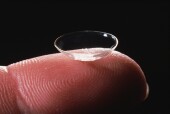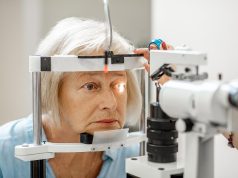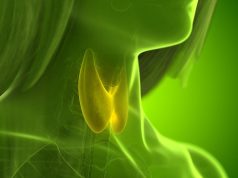Sensor safe for 24-h intraocular pressure monitoring; patients found to have morning acrophase
TUESDAY, April 7, 2015 (HealthDay News) — For patients with thyroid eye disease (TED), a contact lens sensor provides a safe and well-tolerated approach for 24-hour intraocular pressure (IOP) monitoring, according to a study published in the March issue of Clinical & Experimental Ophthalmology.
Anjali S. Parekh, M.D., from the University of California in San Diego, and colleagues conducted a prospective study in 10 patients with established TED (mean age, 61.8 years; 90 percent female) to examine the safety, tolerability, and 24-hour IOP patterns using a contact lens sensor. The authors assessed the incidence of adverse events and tolerability (scale of 0 to 10, increasing intolerance); a cosinor rhythmometry model was used to assess IOP patterns.
The researchers found that the main adverse events were blurred vision, conjunctival hyperemia, and superficial punctate keratitis (50, 100, and 20 percent, respectively). The lens tolerability was found to be 1.5 ± 0.7. Using a contact lens sensor signal, positive linear slopes were detected from wake to sleep (P = 0.254), whereas there was a significant decrease at the transition from sleep/supine to wake/sitting (P = 0.010). A significant nocturnal/sleep acrophase was seen in five patients, with the peak occurring at 6:30 a.m. The 24-hour curves had a mean amplitude of 102.2 ± 52.6 a.u.
“The contact lens sensor provides a safe and well-tolerated approach to 24-hour IOP monitoring,” the authors write.
Several authors disclosed financial ties to medical device companies, including Sensimed AG, which funded the study.
Copyright © 2015 HealthDay. All rights reserved.








